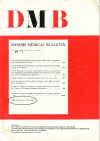锶在骨-种植体界面。
摘要
全髋关节置换术在越来越多的人群和越来越年轻的人群中进行。因为我们的寿命和身体活动时间更长,而且由于髋关节置换手术非常成功,越来越多的患者接受了这种治疗。不幸的是,目前约17%的髋关节置换手术需要进行手术修复。因此,初级种植体和翻修种植体的寿命都是一个问题,值得进一步研究。植入物早期不稳定甚至下沉与无菌性松动风险增加相关,随后需要翻修。因此,目标是通过种植体的骨整合进行早期固定。对于翻修种植体来说,这是一个更大的挑战,因为在手术中经常需要同种异体移植物来获得种植体的立即稳定性。骨移植物被迅速吸收。因此,假体的不稳定性可能在新骨形成良好并能机械地固定假体之前发生。锶是一种双重作用药物;同时具有骨合成代谢和抗分解代谢作用。以锰酸锶的形式,它被用于治疗骨质疏松症。锶可能潜在地改善种植体的早期骨整合和固定。本论文由三个研究组成,探讨了锶在骨-种植体界面的作用。问题是,首先,锶到界面的最佳递送方式是什么?其次,锶能否在界面上发挥双重作用?研究是在一个无骨水泥的,实验性的犬齿间隙模型中进行的。通过骨整合的组织形态学分析和种植体固定的机械推出试验来评估锶的作用。采用不同的立体学方法对每项研究进行组织形态计量学分析。所使用的方法经过严格审查,发现是有效的。研究1将5%锶取代羟基磷灰石(HA)涂层与HA涂层进行了4周和12周的观察。我们检查了锶取代是否改善了植入物的固定。结果发现,在两个时间点上,锶取代羟基磷灰石涂层并没有改善种植体的固定。研究II比较了5%掺锶的HA骨移植扩展剂和HA骨移植扩展剂。骨移植扩展器与同种异体移植物混合,并在钛种植体周围嵌塞。本研究的目的是确定掺入锶的植骨扩展剂是否可以保护同种异体移植物免受快速吸收,增加间隙愈合,从而改善种植体的固定。我们发现锶掺杂能促进间隙愈合并保护同种异体移植物,但力学试验结果尚无定论。原因可能是在4周的观察时间内,增加的间隙愈合尚未到达种植体,因此种植体上的生长没有得到改善。研究III研究了0%、10%或50%锶替代生物活性玻璃涂层与HA涂层对磨砂钛合金种植体的影响。目的是确定生物活性玻璃涂层是否会改善植入物的固定,然后以剂量依赖的方式通过涂层的锶替代进一步改善。不幸的是,生物活性玻璃涂层失败了,大概是由于喷砂粉造成的铝污染。羟基磷灰石包被种植体在骨整合和机械固定方面的各项指标均较好。这些研究表明了进行进一步实验研究的重要性。即使是在调查已知代理是否用于新应用程序时也是如此。锶作为羟基磷灰石骨移植扩展剂的掺杂剂在界面中表现出双重作用的潜力。然而,锶在骨-种植体界面的递送方法显然需要进一步研究。Total hip replacement surgery is being performed on an increasingly large part of the population and at increasingly younger age. Because we live and stay physically active longer, and since hip replacement surgery has become quite successful, the treatment is being offered to progressively more patients. Unfortunately, about 17% of hip replacement surgeries currently involve revisions. Consequently, the longevity of both the primary and revision implant is an issue and warrants further investigation. Implants undergoing early instability or even subsidence correlate with an increased risk of aseptic loosening, subsequently requiring revision. Thus, the goal is early fixation by osseointegration of the implant. For revision implants, this is an even greater challenge since an allograft is often needed during surgery to obtain immediate stability of the implant. Bone grafts are rapidly resorbed. Thus, instability of the prosthesis may develop before new bone formation is well established and can mechanically secure the prosthesis. Strontium is a dual action drug; being both bone anabolic and anti-catabolic. In the form of strontiumranelate, it is used in the treatment of osteoporosis. Strontium may potentially improve the early osseointegration and fixation of implants. This dissertation consists of three studies investigating the effect of strontium at the bone-implant interface. The questions were firstly, what is the optimal delivery method for strontium to the interface, and secondly, can strontium exercise its dual action at the interface? The studies were performed in a cementless, experimental gap model in canine. The effects of strontium were evaluated by histomorphometrical analysis of the osseointegration and mechanical push-out test of implant fixation. Different stereological methods were used for the histomorphometrical analysis of each study. The methods used were reviewed critically and found valid. Study I compared a 5% strontium-substituted hydroxyapatite (HA) coating with an HA coating after 4 weeks and 12 weeks observation time. We examined whether fixation of the implant was improved by the strontium substitution. It was found that fixation of the implant was not improved by the strontium substituted HA coating at any of the two time points. Study II compared a 5% strontium-doped HA bone graft extender with an HA bone graft extender. The bone graft extender was mixed with allograft and impacted around a titanium implant. The objective of this study was to determine whether strontium doping of the bone graft extender could protect the allograft from fast resorption and increase gap healing, leading to the improved fixation of the implant. We found that the strontium doping increased gap healing and protected the allograft, however, results of the mechanical test were inconclusive. The reason might have been that the increased gap healing had not yet reached the implant during the 4 weeks observation time, so ongrowth onto the implant was not improved. Study III investigated the effects of bioactive glass coating with a 0%, 10% or 50% strontium-substitution versus HA coating of grit-blasted titanium alloy implants. The goal was to determine whether fixation of the implant would be improved by the bioactive glass coating, and then further improved by the strontium-substitution of the coating in a dose-dependent manner. Unfortunately, the bioactive glass coating failed, presumably due to aluminum contamination originating from the grit-blasting powder. The HA coated implants were superior in all parameters of osseointegration and the mechanical fixation of the implants. These studies show the importance of performing further experimental investigation. Even when investigating a known agent for use in a new application. Strontium delivered as doping of an HA bone graft extender showed potential as a dual acting agent in the interface. However, delivery methods of strontium to the bone-implant interface clearly need further investigation.

 求助内容:
求助内容: 应助结果提醒方式:
应助结果提醒方式:


